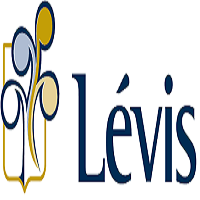Management
Type of resources
Topics
Keywords
Contact for the resource
Provided by
Formats
Representation types
Update frequencies
status
-
Points, polylines and polygons where species and features have been found, harvested or detailed. Community Based Coastal Resource Inventory (CCRI) – Fisheries and Oceans Canada in conjunction with several Federal and Provincial agencies created, implemented, and managed a program which set out to develop a coastal resource inventory based on the traditional knowledge of local residents. Through partnerships with the province of Newfoundland and Labrador’s Regional Economic Development (RED) Boards and other community based groups the project assembled a database containing several decade’s worth of local knowledge. The value of the information collected came through individual interviews with people who had extensive knowledge of the immediate geography and resource, having lived, worked and harvested the regions over a lifetime. This project ran from 1996 to 2007.
-

Dataset of species/gear type commercial fisheries from 2012 to 2021 in the Eastern Canada Regions. Only fish harvested from the NL, Maritimes, Gulf, Quebec and Eastern Arctic regions are included (Species Sought). The data was obtained from Statistical Services, Fisheries and Oceans Canada (DFO) and consists of commercial species/gear type landings data from 2012 to 2021 taken from Northwest Atlantic Fisheries Organization (NAFO) Subareas 0, 2, 3, 4 and 5 and fished in the NL, Maritimes, Gulf, Quebec and Eastern Arctic regions. The layer was created by overlaying a 2 minute hexagonal grid (approx. 10km2 cell) on species/gear type commercial fisheries point data and summing the total landings by weight reported for each cell over the ten year period. Therefore, the value of each grid cell is equal to the total species/gear type landings in kg from 2012 to 2021 for the area, and may represent many fishing events from several vessels over the ten year period. All landings are from Canadian vessels greater than 35-ft, and does not include information pertaining to international fishing vessels (i.e., St. Pierre). Individuals should exercise caution when interpreting this data. Data has not been altered and is mapped from the original logbook entry for each record prior to amalgamation. Data may contain errors such as inaccurate or nonviable coordinates, landed weights and/or species identification. For example, cases of fishing events reported in a NAFO Division with corresponding coordinates falling outside that particular NAFO Division or fishing events which appear to be located on a land mass due to rounding errors in the original entries. Such cases were excluded from the dataset. Only one location is given for each fishing event; therefore, a fishing activity that would normally cover a large area (i.e., trawling) is only shown in a single location. Some species may not include all records or locations where activity is taking place due to regional differences in permissions for mapping, or because the fishery is only partially georeferenced (e.g. Lobster). The locations/areas shown should only be used as an estimation of fishing intensity and a general guide of where particular species/gear type fishing occurs. This dataset has been privacy screened to comply with the Government of Canada's privacy policy. Privacy assessments were conducted to identify NAFO unit areas containing data with less than five vessel IDs, license IDs and fisher IDs. If this threshold was not met, catch weight locations have been withheld from these statistical areas to protect the identity or activity of individual vessels or companies. In some instances, permissions were obtained to map species or gears with a limited number of vessels, licenses, or fisher ids. The withheld areas are indicated by the unit area that has been removed and given a weight of -9999.
-
Proxied dataset of inshore lobster commercial fishing for 2012 - 2021 in the Newfoundland and Labrador region. Only lobster harvested from the Newfoundland and Labrador region are included, based on species sought. Commercial data for the inshore lobster fishery does not require a set of coordinates be provided for catch records. With zero georeferenced inshore lobster records, the inshore lobster fishery leaves a major data gap in one of Newfoundland and Labradors largest fisheries. The Gulf region created a lobster proxy mapping tool, which associated each commercial lobster record with the most likely 10km2 hexagon grid cell based on a number of weighted variables. The tool was adopted by the Newfoundland and Labrador region and altered to work with its own variables which include human use, habitat, accessibility, area/location, home port distance, traditional ecological knowledge and depth. Each hexagon represents the summed total weight of all records associated with a particular hexagon. The best available commercial data used in this model is derived from landings data and may not include catches that have resulted in cash/wharf sales. As a result, there are some areas of Newfoundland and Labrador that may be under represented in this dataset where wharf sales may be high. Therefore, this dataset should be viewed as a general estimation on lobster harvesting patterns within Newfoundland and Labrador.
-

This feature class represents Manitoba's Forest Management Licence (FML) boundaries. The Forest Act provides for the establishment of Forest Management Licences to provide a continuous supply of timber to the forest industry. A Forest Management Licence, granted for a period of not more than twenty years, may be renewed for further periods. The Forest Management Licence describes the land upon which trees may be cut, the volume of wood that may be harvested, and other terms and conditions. There are currently two Forest Management Licences in Manitoba, FML-2 and FML-3 . Timber management and forest renewal are the responsibilities of Manitoba Sustainable Government on Crown Forest Land outside of Forest Management Licence areas, and within Forest Management Licence areas where the wood is used by a facility other than that operated by the Forest Management Licensee. Version 3 of Manitoba's Forest Management Licence (FML) boundaries includes FML-2 and FML-3. Previous boundaries associated with FML-1 and IWSA's have been removed. To update and improve the positional accuracy of Manitoba's Forest Management Licence (FML) boundaries, written descriptions of FML areas were referenced along with linework from Forest Land Inventories (FLI), Forest Resource Inventories (FRI) and Manitoba's township fabric to improve Provincial FML boundaries. Boundary linework the following related geospatial datasets were topologically checked for coincident linework: Manitoba Provincial Boundary; Manitoba Forest Management Units ; Manitoba Forest Management Licence Agreement Areas; Manitoba Forest Sections; Manitoba Provincial Forests . Fields Included: FML_NAME : Forest Management Licence area name.
-

The Natural Environment Management Plan (PGMN) identifies the area for which the City of Lévis has conservation goals. This corresponds to map 13 of the Development Plan “The Natural Environments Conservation Area”.**This third party metadata element was translated using an automated translation tool (Amazon Translate).**
-

Manitoba's Forest Management Licence Area (FML) Boundaries – Version 4. The Forest Act provides for the establishment of Forest Management Licences to provide a continuous supply of timber to the forest industry. A Forest Management Licence, granted for a period of not more than 20 years, may be renewed for further periods. The Forest Management Licence describes the land upon which trees may be cut, the volume of wood that may be harvested, and other terms and conditions. There are currently three Forest Management Licences in Manitoba. Timber management and forest renewal are the responsibilities of Manitoba Conservation on Crown Forest Land outside of Forest Management Licence areas, and within Forest Management Licence areas where the wood is used by a facility other than that operated by the Forest Management Licensee. Version 4 of Manitoba's Forest Management Licence (FML) boundaries incorporates minor edits made to the BDY_MB_FMU_PY feature class, ensuring coincident line work with the provincial boundary and provincial forests. Version 3 of Manitoba's Forest Management Licence (FML) boundaries includes FML-2 and FML-3. Previous boundaries associated with FML-1 and IWSAs have been removed. To update and improve the positional accuracy of Manitoba's Forest Management Licence (FML) boundaries, written descriptions of FML areas were referenced along with line work from Forest Land Inventories (FLI), Forest Resource Inventories (FRI) and Manitoba's township fabric to improve p rovincial FML boundaries. Boundary line work for all of the following feature classes were topologically checked for coincident line work: 1. BDY_MB_FMU_PY (Provincial FMUs); 2. Provincial Boundary; 3. BDY_MB_FML_PY (Provincial Forest Management Licence Areas); 4. BDY_MB_FOREST_SECTION_PY (Provincial Forest Sections); 5. BDY_MB_PROV_FOREST_PY (Provincial Forests) The dataset includes the following fields /Les ensembles de données comprennent les champs suivants Name / Nom Alias Description FML FML Forest Management Licence Area number Numéro de zone de gestion forestière visée par une licence FML_NAME FML Name / Nom Forest Management Licence Area name Nom de zone de gestion forestière visée par une licence AREA_HA Area / Surface (Hectares) Area in hectares La surface en hectares Limites des zones de gestion forestière du Manitoba visées par une licence – Version 4
-

Wildlife Habitats (HAFA) contains data for the 11 legal wildlife habitats located on land under the domain of the State and is protected under the Wildlife Habitat Regulations (RHF). There are also HAFAs located on mixed and private lands for information purposes. Since they are essential environments for wildlife, the eleven habitats benefit from legal protection in Quebec. __The conservation of wildlife species and their habitats is beneficial for biodiversity. Each of these species plays an important role in our ecosystems. __ ### #Mise on guard: The digital version of geo-descriptive data describing wildlife habitats is produced from a legal perspective of location, protection and management of habitats. In fact, only the digital version that has been published in the Official Gazette of Quebec is recognized as legal. Last publication of wildlife habitats: November 17, 2022.**This third party metadata element was translated using an automated translation tool (Amazon Translate).**
 Arctic SDI catalogue
Arctic SDI catalogue